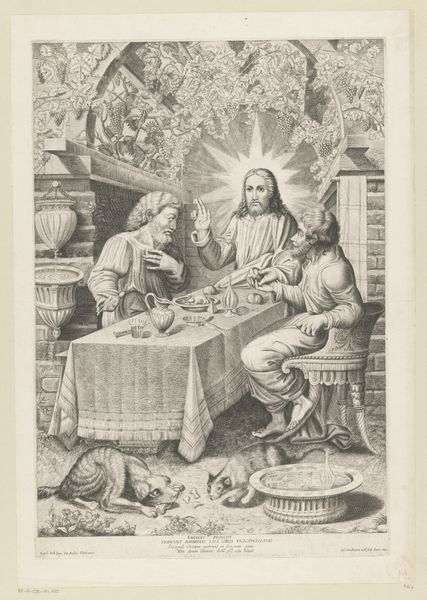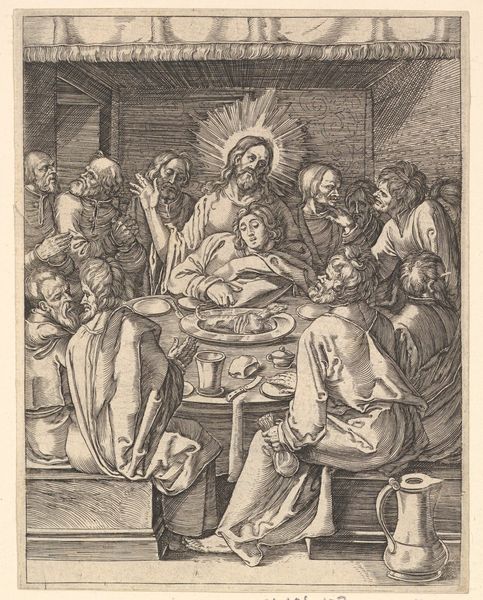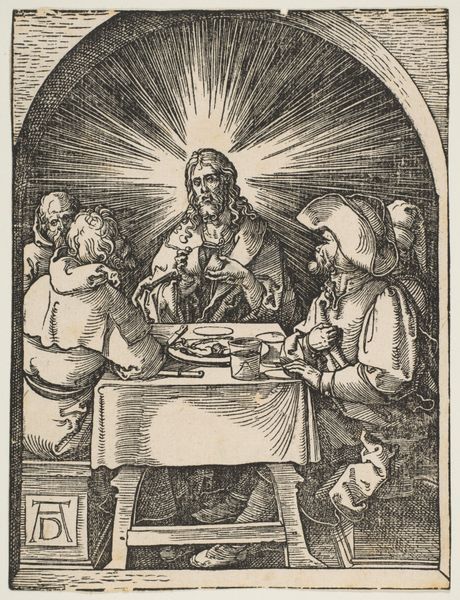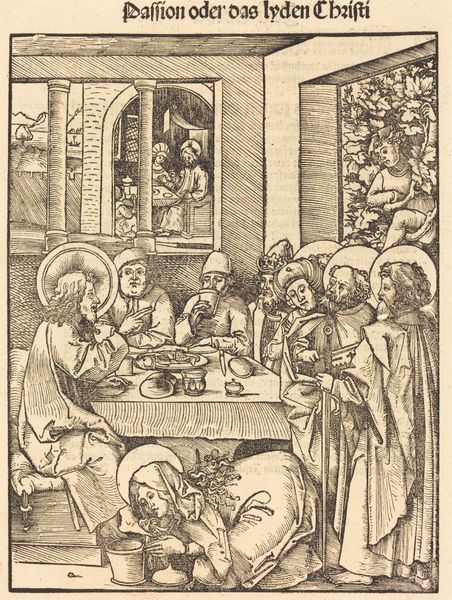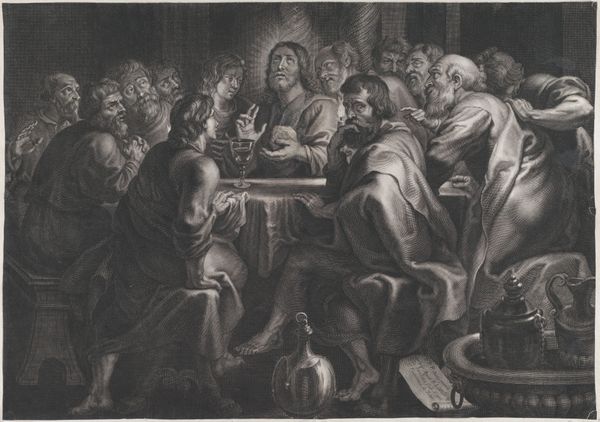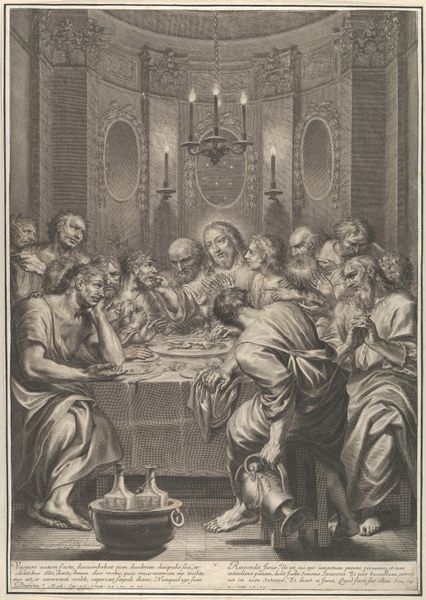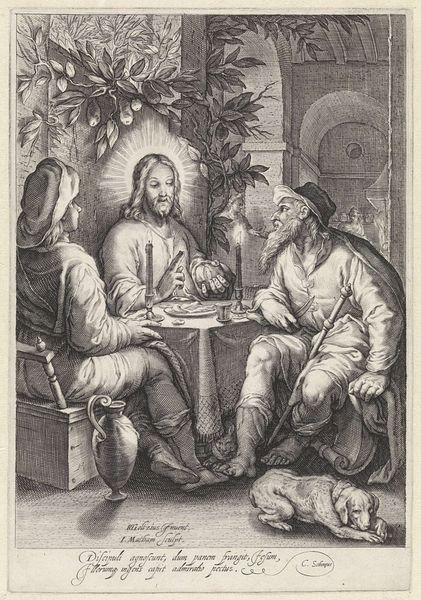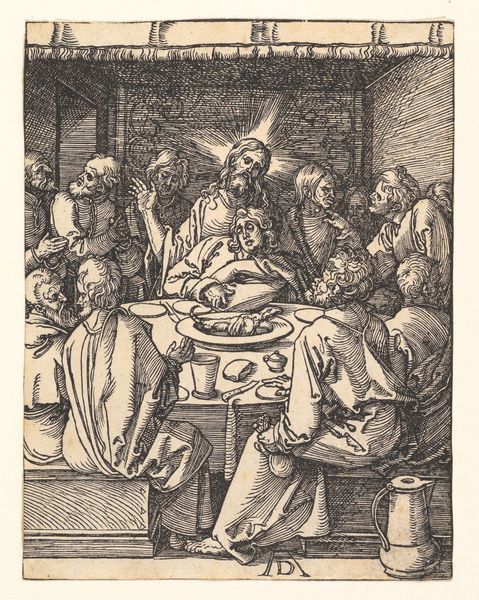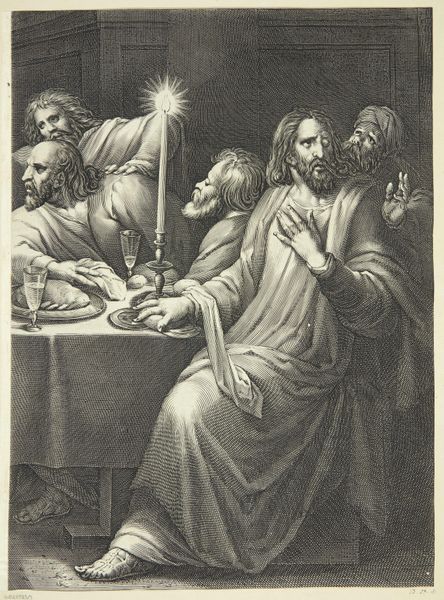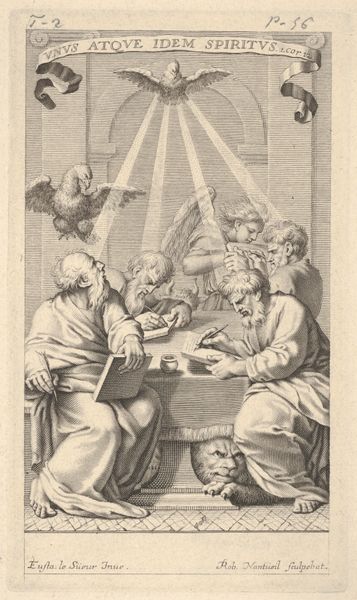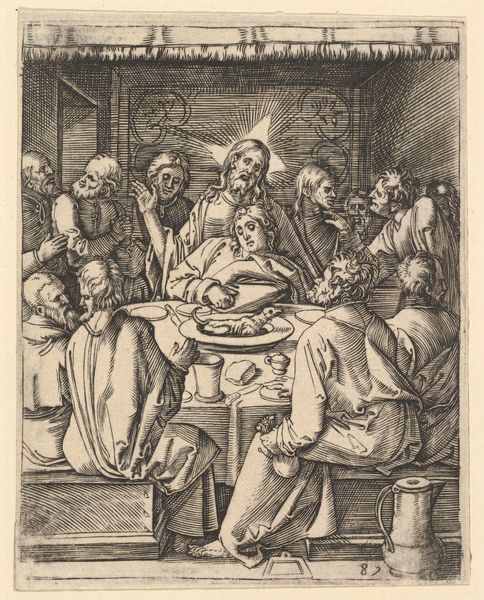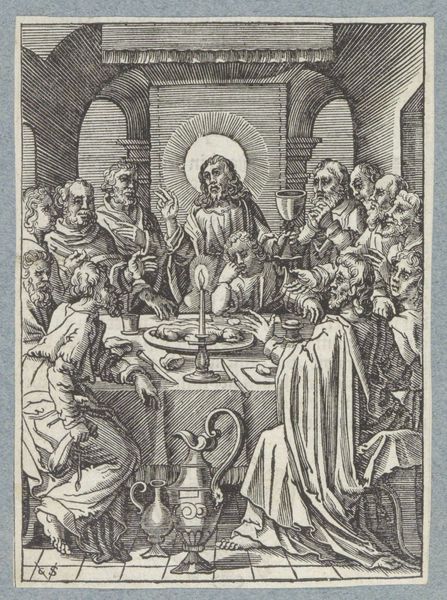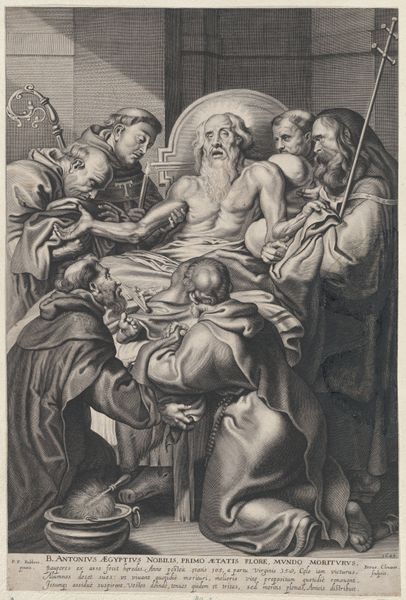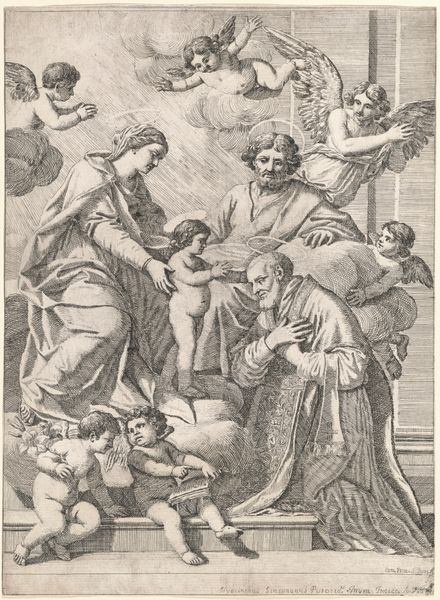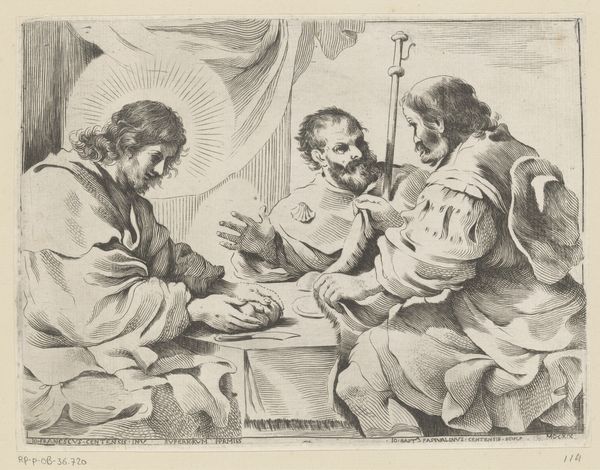
print, engraving
#
baroque
# print
#
landscape
#
caricature
#
figuration
#
history-painting
#
engraving
Dimensions: 418 mm (height) x 306 mm (width) (bladmaal)
Curator: This is Jan Harmensz. Muller's "The Last Supper," an engraving from 1594. Look at the incredibly intricate detail he achieves! Editor: The first thing I notice is the almost caricatured expressiveness, a stark contrast between the sacredness of the event and the almost grotesque depiction of the figures, especially the ones seated on the left! Curator: The exaggeration might be Muller’s way to visually punctuate the emotions bubbling under the surface during this crucial moment. The heaviness, the unspoken premonition, amplified through these... emphatic features. The artist is portraying the human experience around this pivotal moment in a new way. Editor: Absolutely, the weight of betrayal is palpable. Note the outside landscape: it seems both naturalistic and dreamlike. The single praying figure mirrors the intensity and foreshadows, perhaps, Jesus’ agony in the Garden of Gethsemane. It reflects how religious and political turbulence affects both private reflection and communal experiences. Curator: The composition really leans into Baroque sensibilities, with dramatic lighting provided by the candlesticks, and incredibly ornate depiction of space and landscape behind them. Candles, with the ephemeral quality of its flame, speaks of presence but hints at mortality. What lingers is not just light but the promise of shadows, much like the emotional complexities of the Last Supper narrative. Editor: Consider how this imagery may resonate across the ages, even to us today. Think about moments of togetherness and vulnerability: that scene reminds me of recent dialogues about social justice around a table where painful truths are laid bare! Curator: Seeing the ways shared narratives echo, evolve, and reappear in new contexts enriches the past. And in the details we find cultural continuities! Editor: It gives us hope that these engravings from 1594 may speak for us even today about justice. Curator: That the conversation has not ended after all this time; perhaps this also can show our ways of resilience.
Comments
No comments
Be the first to comment and join the conversation on the ultimate creative platform.
